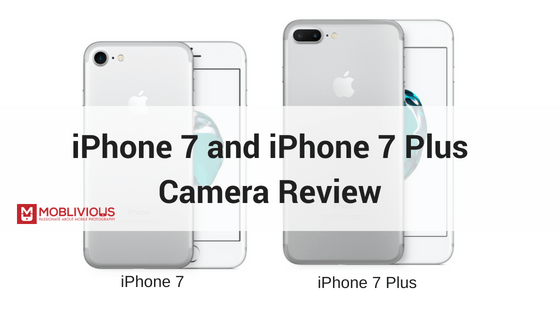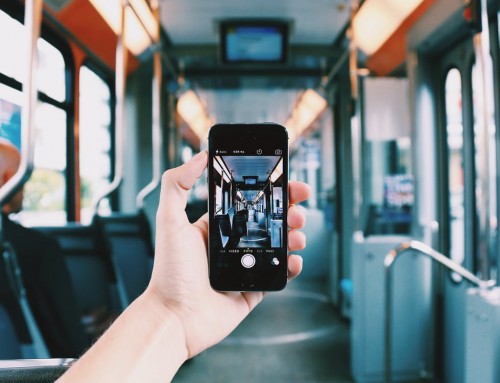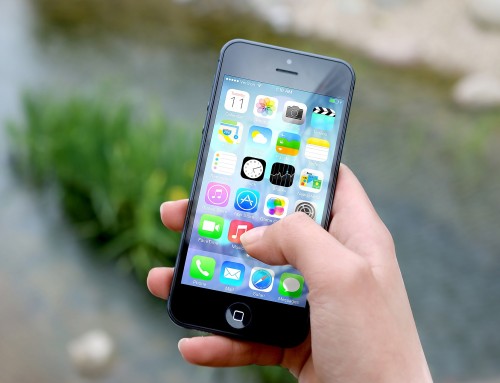No products found.
For the last decade, Apple has been the face of innovation and new technology. A smartphone was not something new in 2008, but Apple made it a mainstream product by introducing a powerful and revolutionary device – the iPhone.
With top-notch features, the iPhone has changed the way people use their phones. Most notably, users can now take crystal-clear pictures all thanks to the high-quality software, fast shutter speed, and impressive megapixels.
Apple continues to be the epitome of high-end camera phones and there’s no doubt that the forthcoming models will blow our minds. Meanwhile, we still have the iPhone 7 and iPhone 7 Plus cameras that are also great.
But the question is: when you pin the iPhone 7 camera next to the iPhone 7 Plus camera– do you go for the cheaper option or do you pay more for better camera features?
To answer this, you need to fully understand what these two iPhones bring to the table.
iPhone 7 Camera Review
No products found.No products found.
No products found.
PROS
CONS
|
Quality
|
Price |
Our Rating |
|---|---|---|
|
$$$ |
How to Easily Record iOS Screen on your Mac or PC + GiveawayQuick Camera Specs
Primary Camera
- 12MP (f/1.8, 28mm, 1/3”)
- OIS
- Quad-LED dual-tone flash
- Phase detection autofocus
Secondary Camera
- 7MP (f/2.2, 32mm)
- HDR face detection
- Panorama
- 1080p @30fps
- 720 @240fps
Features
- Face/smile detection
- Touch focus
- Simultaneous 4K video
- 8MP image recording
- Geo-tagging
Video
- 720p @240fps
- 1080p @30/60/120fps
- 2160p @30fps
Picture Quality
iPhone 7’s camera represents the solid evolution of the iPhone 6 series in both image quality and features. The phone features a wide-angle 28mm lens and a 12MP 1/2.7-inch type sensor. Unlike the iPhone 6 and 6s, the iPhone 7 has brighter lenses (f/1.8 compared to f/2.2).
Optical Image Stabilization
It also comes with enhanced optical image stabilization that was only available on iPhone Plus models. Not to mention, the efficient power sensors and improved image processing.
Lens Design
Thanks to its latest lens design, the phone’s camera comes with improved texture performance, the latest image processing chip, and faster lens that lowers the noise score of the camera.
RAW Format
The iPhone 7 was the first Apple smartphone to have RAW shooting format. This format has a larger JPEG size which stores more unprocessed or slightly processed data. As a result, photos taken from this camera are easier to fix and convert into smaller JPEG without altering the picture quality. This RAW shooting power allows the iPhone to compete with high-end mirrorless cameras and DSLRs.
Zoom Features
Autofocus and zooming are also impressive. Compared to the previous versions, there is very little delay and hunting around, even in low light conditions where a camera may struggle to find the subject.
Colors and Rendering
Outdoors, iPhone 7 produces better contrast shots and brighter colors than the previous iPhone series. It captures excellent exposures with wide and dynamic ranges. This makes it an excellent camera phone for architecture, street scenes, landscapes, and the general outdoors.
The phone also records excellent color rendering, balanced white light, and good detail – a clear improvement from the iPhone 6s.
HDR Mode
Generally, the HDR mode also displays excellent detail across the tonal range with precise and well-defined highlight and background, as well as visible detail in the shadows.
Tip: When taking photos, especially outdoors where there’s minimal motion and a large variation in the brightness, switch to HDR mode. This will automatically combine a number of exposures to create a single image that vividly represents the tonal range from light to dark.
Note: A Few Downsides
However, even with this awesome model, there are some shortcomings. For instance, there is very high-contrast scenes and overexposed highlights when a lot of light is involved.
Furthermore, when you take shots indoors, things do not pan out as expected. While still-shots are richer, sharper, and crisper, the shadow areas are rather blotchy and the edges of the objects are blurry and not straight. Nonetheless, this is something that Apple can solve with a simple software update.
Video Quality
The iPhone 7 shoots full HD in 30/60 frames-per-second. This makes your home videos look clear and precise. Just like the photos, the detail levels of videos are excellent and the lens focuses and zooms flawlessly, even with poor lighting.
And what is a great video without crisp and clear sound?
The iPhone 7’s mic picks up sound clearly. It also allows you to zoom in and out at any point with just a tap on the screen.
Nonetheless, in order to change the video resolution, you have to exit the camera app and go to the main settings page. This is a very long-winded and fiddly process, especially if you are constantly changing between 4K and Full HD resolutions.
iPhone 6s Camera vs. iPhone 7 Camera
When you compare iPhone 7’s camera to its immediate predecessor – iPhone 6s, there are a few upgrades to take note of. While the resolutions are exactly the same, the enhancements are behind the scenes. These include brighter and more colorful images, faster shutter speed, and enhanced low light performance complete with a larger screen.
Here is a breakdown of the differences between an iPhone 7s camera and iPhone 6s camera:
Rear Camera
iPhone 6s iPhone 7
12MP, f/2.2 aperture 12MP, f/1.8 aperture
Software Image Stabilization (SIS) Optical Image Stabilization (OIS)
Dual-LED flash Quad-LED flash (dual tone)
Focus pixels Focus pixels
4K video recording 4K video recording
Front Camera
iPhone 6s iPhone 7
5MP, f/2.2 aperture 7MP, f/2.2 aperture
720p video recording 1080p video recording
With the larger f/1.8 aperture, four LED flash, and optical image stabilization with warm and cool tones, the iPhone 7’s camera is way better than the 6s’. Furthermore, the 7 comes with a 6-element lens, enhanced support for wide color capture, and upgraded image signal processor which boosts the image and color accuracy.
Meanwhile, the front camera is upgraded to 7 megapixels and, while it may still be a f/2.2 aperture, it delivers high-quality 1080p videos and greater detail.
However, iPhone’s biggest photographic weakness – low light conditions – is still a problem with this smartphone. And that’s where the iPhone 7 Plus camera comes in, which is an upgrade of an upgrade.
Here’s a detailed review.
iPhone 7 Plus Camera Review
No products found.No products found.
No products found.
PROS
CONS
|
Quality
|
Price |
Our Rating |
|---|---|---|
|
$$$ |
The camera systems of the 5.5-inch iPhone Plus 7 and the 4.7-inch iPhone 7 are so similar that it is almost difficult to realistically review them separately.
As you’ve already known about the key camera specs of the iPhone 7 from the preceding review.
Here’s a quick recap of the same so you can know which camera features are common to both Apple smartphones.
Rear/Primary Camera Specs
- 12MP images
- Optical zoom at 2x
- A six-element, 28-mm wide-angle lens that features a f/1.8 aperture
- Optical image stabilization for photos
- Quad-LED flashlight
Front/Secondary Camera Specs
- 7MP images
- A ƒ/2.2 aperture
- 1080p HD video recording
- Retina flash
- Wide color capture
- Face and body detection for identification
- Automatic image stabilization
- Backside illumination sensor
- Auto HDR
Video Specs
- 4K video recording at 30 fps
- Optical image stabilization for video
- 720p HD video recording at 30 fps
- Optical zoom at 2x
- 1080p HD video recording at either 30 fps or 60 fps
- Quad-LED flashlight
So, what sets the iPhone Plus 7’s camera system apart from that of its smaller-display size counterpart, the iPhone 7?
Key Difference Between iPhone 7 Plus Camera System and that of iPhone 7
As you’ve seen above, the camera specs of the iPhone Plus 7 are similar to those of iPhone 7 in virtually all aspects. However, one thing makes the bigger variant a superior choice for mobile photographers – the dual-lens camera system.
While the iPhone 7 relies solely on a 28-mm wide-angle lens that features a f/1.8 aperture to allow light into the primary camera and let you zoom in on images, the iPhone Plus 7 has an additional 56mm telephoto lens with a smaller f/2.8 aperture.
Both lenses shoot 12MP images. However, the wider aperture on the telephoto lens allows you to magnify images up to 10x without compromising on image quality. With optical zoom at 2x, the iPhone 7’s rear camera only allows digital magnification of images up to 5x.
The shortcomings of the telephoto lens generally tend to become more apparent in dark situations than in bright situations. The smaller f/2.8 aperture of the tele-lens means that higher ISO settings are required to achieve quicker shutter speeds in low-light conditions. This is because the lens reaches its maximum exposure limit much faster than the wide-angle lens.
In darker situations, the iPhone Plus 7 rear camera uses the wide-angle module to deliver brighter and sharper images.
iPhone 7 and iPhone 7 Plus Camera Selection Guide for Mobile Photographers
Choosing a camera phone for your photography can be pretty confusing if you are presented with two options that are as good and similar as the iPhone 7 and the iPhone Plus 7.
Hence, the question many iPhone enthusiasts frequently ask is: which of the two iPhones should they buy?
Aside from knowing the difference between the rear camera on an iPhone 7 and iPhone Plus 7, other factors may also affect your decision on which iPhone to buy.
Here is a look at three of those factors.
The Display of the Camera Phone
Both the iPhone 7 and the iPhone Plus 7 come with a beautiful Retina HD display. However, as already mentioned, the iPhone 7 has a 4.7” display, while the iPhone Plus 7 boasts of a larger 5.5” display.
But does display matter with regards to the performance of a camera phone? Yes, it does.
The larger display of the iPhone Plus 7 with a screen resolution of 1920 x 1080 is one of the reasons why the smartphone is a better camera phone than the iPhone 7.
With a bigger screen, you get more pixels for better picture quality. The iPhone 7 Plus camera has a pixel density of 401 ppi, while that of the iPhone 7 is only 326 ppi (screen resolution of 1334 x 750).
Therefore, if you are looking to snap sharper, crisper images with your camera phone, you are better off going for the iPhone Plus 7. The higher ppi also improves the photo and video capturing and viewing experience.
The Price of the Camera Phone
Like it or not, the price of the two iPhone models will influence your purchase decision. Because it has dual-camera technology as an added bonus, the iPhone Plus 7 generally retails at a higher price compared to the iPhone 7.
If you can comfortably pay for the iPhone Plus 7, you’ll surely have a better experience taking photos and capturing videos, thanks to the smartphone’s advanced camera technology.
But if you can’t afford the pricier upgrade, the iPhone 7 can still do a decent job at taking 12MP images. After all, only the dual-camera trickery sets the phone’s camera apart from that on its bigger sister phone.
Your Personal Preference
The larger display of the iPhone Plus 7 may provide better quality images, but that doesn’t mean that the iPhone 7 camera can’t be used to snap great photos.
If you think the camera specs of the iPhone 7 will suit your photography needs just fine, or you’re willing to forego the unique dual-camera feature of the iPhone Plus 7 so you can enjoy the convenience of carrying a smaller iPhone in your hands wherever you go, investing in the iPhone 7 would make perfect sense.
After all, you have the right to choose something that is to your liking.
What’s the Final Verdict?
So, are smartphones with two cameras on the back better than those with only one rear camera?
The answer is a definite “YES.”
Whether you’re starting out in the creative world of photography, or you’re a seasoned photographer, chances are high that you are looking to test out and make the most of the dual-camera technology offered by the iPhone 7 Plus camera.
If you want a cheaper or smaller smartphone, go for the iPhone 7.
But if you can afford and don’t mind the bigger size of the iPhone Plus 7, get ready to experience its superior image and video capture abilities, and take your mobile photography to the next level.
Enjoy the crisp, clear photos.
No products found.
Last update on 2024-04-16 at 00:43 / Affiliate links / Images from Amazon Product Advertising API







Leave A Comment